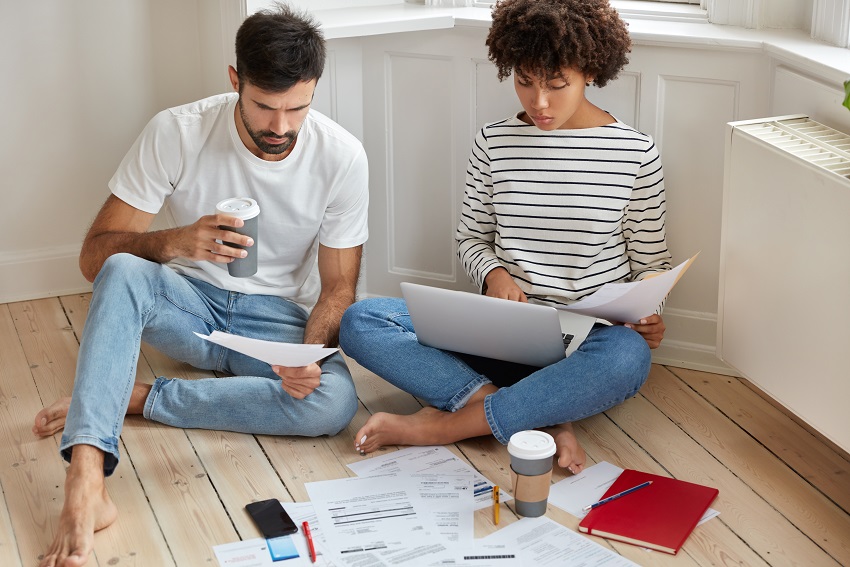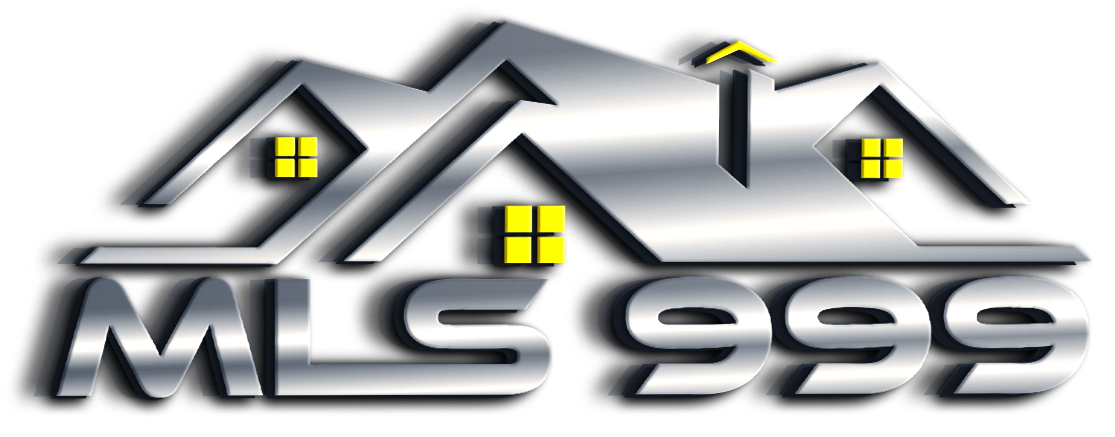
There’s a lot to know when it comes to buying a home in Toronto. Whether you’re buying your first condo, moving to a bigger house or downsizing, our in-depth Buying Guide will take you through all the steps.
- Get pre-qualified for a mortgage, make important financing decisions and choose a lender
- House hunt like a pro, online and in-person
- Make an offer and not be intimidated by the paperwork, negotiations or bidding wars
- Be prepared for the closing process and costs so you don’t get caught off-guard.
Financing
Step 1 – Get Pre-Approved for a Mortgage
There’s a reason we put this section first: the first step to buying a house or condo in Toronto should be finding out how much your bank is willing to lend you. When you pre-qualify for a mortgage, your lender will look at your income, your debts and your down payment. It’s important to take that pre-qualification to the next level before you fall in love with a house by getting pre-approved for a mortgage. A mortgage pre-approval will be in writing (generally valid for 90 or 120 days) and will require you to prove your income and credit history. Pre-approvals will include an interest rate guarantee.
Of course, a pre-approval is not a guarantee that a lender will lend you a certain amount of money for any home. Lenders want to know that the home they are purchasing with you (by lending you the money) is worth what you paid. In Toronto, banks generally order an independent appraisal of a home before they advance the mortgage money.
Getting pre-approved will ensure that you know how much mortgage you can get, which in turn will help you know what price range of homes you should be targeting in your search. It allows you to focus your house-hunting efforts and eliminates the risk and uncertainty of financing once you find your perfect home.
Step 2 – Mortgage Decisions
Mortgages can seem intimidating, especially for the first-time buyer. Once you’ve qualified for a mortgage, there are some basic decisions you will have to make before you take possession of your house or condo: Mortgage term, amortization, interest rate and type of mortgage. Read on to find out what all of that means and use our handy Mortgage Calculator to estimate what your payments would be
Mortgage Term and Amortization
The mortgage term and amortization period affect the amount of money you can borrow (and thus the price of the home you can buy), and dictate how much your monthly payment will be.
Mortgage term
This is the amount of time a lender will loan you money for – typically from 6 months to 5 years. When the term is up, the remaining amount is payable in full unless you arrange new financing for another term.
Choosing a mortgage term is tricky and requires you to be knowledgeable about trends in the marketplace, as well as having a sense as to the amount of risk you’re willing to endure. If you choose a 6-month term, and interest rates increase drastically in that time frame, will you still be able to afford your home?
Amortization
Few (if any) of us can pay off the entire principal of a large mortgage in a six month or even a five-year term. Imagine how big your payments would be! To help you out, lenders calculate or amortize, the mortgage payments over a much longer time, often as long as 25 years. They aren’t loaning you the money for a single 25-year period–they’re just calculating the payment schedule as if it will take you that long to pay back the principal plus interest. You will probably renew the mortgage several times during the amortization period, and you always have the option to change the amortization depending on market conditions or your financial situation. The longer the amortization period, the lower your individual payments will be – but this also means you’ll be paying more in interest.
Payments
Most mortgage payments consist of two parts: principal and interest. This is known as a blended mortgage payment. Each payment reduces the balance owed on the mortgage by the portion of the payment that is credited to the principal. Over time, the proportion of your payment that reduces the principal balance will increase. The faster you can pay down the remaining balance, the less total interest you’ll pay. There are many ways you can pay down your mortgage faster, from accelerating your payments (e.g. paying biweekly instead of twice a month, for 26 payments per year instead of 24) to making lump sum payments on your mortgage; your lender can help define the right strategy for you.
Interest Rates
The interest rate is one of the biggest contributing factors to how much you end up paying for your home, both on a monthly basis and over the life of your mortgage. Interest is the cost of borrowing money. Interest rates fluctuate with the economy. The interest rate you commit yourself to at the beginning of the term can have a significant effect on the amount you pay each month for your mortgage. There are two basic types of interest rates used in mortgage products: fixed-rate and variable-rate:
Fixed-rate mortgage – Essentially, this means committing to a single interest rate that will not change for the term of your mortgage. This strategy locks in how much of your monthly payment repays the principal vs. going to interest. Fixed-rate mortgages are great in an economy where interest rates are going up, as you never have to risk paying higher interest rates.
Variable-rate mortgage – There are two types of variable-rate mortgages. With the first kind, the amount of your monthly payment fluctuates with the bank’s prime interest rate – if rates go up, your payment increases; if rates go down, your payment decreases. The second type of variable rate mortgage has a consistent payment – BUT the amount that goes towards repaying the principal (vs the interest) part of your mortgage floats in relationship to the bank’s prime interest rate. If rates go up, the amount you pay towards the principal goes down, and the amount of interest you pay goes up.
Types of Mortgages
Conventional mortgage – Aptly named because they are the most common type of mortgage. The lender will loan you up to 80% of the appraised value or purchase price of the property (whichever is lower), and you generally need to come up with the other 20% as a down payment.
High ratio mortgage – When you don’t have the 20% down payment required to get a conventional mortgage, a high ratio mortgage can advance you up to 95% of the home’s appraised value or purchase price. However, since you are borrowing more than the usual 80%, the government insists that the mortgage is insured against default and that you pay the cost of the insurance. That cost can be a few percent of the mortgage amount, and is added to the mortgage principal.
Step 3 – Choose a Lender
There are many types of lenders and mortgages out there. It’s a good idea to talk to at least three lenders:
- Your own bank. They have your bank accounts, credit cards and investments so they should be motivated to give you a good rate.
- A mortgage broker. Mortgage brokers work with a lot of different lenders and will go to them on your behalf to find the best mortgage rate and terms. Usually, broker fees are paid by the banks, so it’s a good way to comparative shop without having to do all the leg work yourself.
It’s important to note that not all of these decisions have to be made before you start looking for a home; the crucial step is getting a pre-approval from a lender—then you’re ready to start the search! Details regarding the term, rate and even which lender you use can be decided—and changed—after the actual purchase, all the way up until reasonably close to your closing date (the date you take possession of your new place). However, the more you understand about your options, the better prepared you will be when that magical day comes.
Househunting
Let the fun begin! Whether you’re searching online, hitting open houses or searching with a REALTOR, hunting for your dream house or condo is both a science and an art. Here’s what’s involved:
Step 1 – Develop your Wish List
Knowing what you need and want in your home is critical. What are your must-haves, your nice-to-haves, and your no-way-absolutely-nots? How many bedrooms do you need? What kind of outdoor space do you want? What about counter-tops, appliances and floors? You can’t get what you want if you don’t know what you want. Of course, location will be a big decision – what Toronto neighbourhood makes you feel at home.
Of course in a hot market like Toronto’s, compromise is a big part of the process. Almost everyone needs to compromise on something, and it usually comes down to 4 things: size, finishes, location and price. What’s most important to you? Would you rather live in a bigger house or closer to downtown? Are you OK spending more money for a renovated house or could you buy a cheaper house and do the renovations yourself? Would you consider living on a busy street to more affordably be in a better neighbourhood with access to better schools?
Step 2 – Pick Your Team
Buying a house or condo will likely be the biggest purchase you’ll ever make – but don’t worry, you don’t need to do it alone. MLS999.ca team is a Great Toronto Real Estate Agent who works exclusively for YOU. You’ll also need a lender to take you through your financing options, and a lawyer to help with the legal aspects of the purchase. There are thousands of professionals out there (of varying quality), so ask your friends and family for recommendations, do your research and don’t be afraid to interview multiple people.
Step 3 – Searching for Houses and Condos Online
You aren’t alone: 94% of Canadians search for their home online. While there are endless real estate websites out there, here are the ones you should consider:
- Realtor.ca is the website owned by the real estate association. It pulls available properties for sale directly from the system that agents use, the MLS (multiple listing services). realtor.ca is usually a day or two behind what’s happening in the market, but a great tool to explore what’s for sale and start to get a feel for what’s available.
- Custom Listings from a REALTOR Another way to get quick and easy access to what’s available is to have a real estate agent e-mail you daily listings of available houses and condos that match what you’re looking for. Better yet, ask them to set you up on Collab to have control over your searches and get instant notification of new listings that match what you’re looking for.
Tips for looking for a home online:
- Keep an open mind. Photos aren’t always representative of what the house looks like in real life.
- Don’t always believe the description and read between the lines. ‘Ready to put your decorator touch on it’ means it needs a lot of work. And ‘Leslieville dream home for under $600K’ probably isn’t really in Leslieville.
- Remember that the asking price is very different than the sale price. In a hot market like Toronto’s, houses often sell for far more than the listing price.
- If you’re shopping for a condo, keep in mind that what’s included in the maintenance fees varies from building to building, so it isn’t easy to compare condos. A lower maintenance fee might still mean more monthly costs if it doesn’t include heat and electricity.
- Take some time to learn how to read an MLS listing – all those acronyms are guaranteed to confuse you.
Step 4 – House Hunting in Real Life
This is your opportunity to get a feel for the different Toronto neighbourhoods, refine your wish list, and ask questions. While a wish list seems kind of scientific and is a useful tool in deciding which properties to visit, the truth of the matter is that most people walk into their perfect home and just feel it. Of course, it helps when it satisfies your needs and wants too, but don’t underestimate the power of ‘just knowing’.
You can visit homes for sale in real life with your real estate agent or by attending an open house. Keep in mind that not all properties will have open houses, so working with a real estate agent you trust the only way to guarantee that you’ll be able to see the houses or condos you want to see (and on your schedule!).
Tips for looking at homes in real life:
- Make a plan. Toronto is a big city, and if you’re like most people, you have a few target neighbourhoods. Try to focus on one neighbourhood at a time and don’t forget about traffic and the time it’ll take you to parallel park.
- Carpool. If you’re looking at houses or condos with a real estate agent, let them do the driving. Your attention is better focused on the actual neighbourhoods rather than when to turn left. If you’re checking out open houses, try walking or biking to them – Torontonians love open houses, and street parking can be a drag.
- Wear slip-on/slip-off shoes. Seriously. You’ll be taking your shoes off dozens of times, so save yourself the hassle of lace-up shoes. Wearing socks will also save you in the ‘do-frat-boys-live-here?’ houses.
- Don’t just focus on the house or condo, focus on the neighbourhood. Drive around the neighbourhood. Locate the schools, parks and grocery stores. Take a walk down the street and check out the neighbours. Make a point of going to a cafe, restaurant or pub in the area.
- Vary the time of day that you house hunt. Everything looks better when the sun is shining, but it’s important to get a feel for the house or condo and the neighbourhood during the day AND at night.
- Experience the bad with the good. Every neighbourhood has its drawbacks, so make a plan to experience them. Thinking of buying a house near the railroad tracks? Check it out during rush hour when most of the trains are running. Thinking of buying on Queens Quay? Make sure to check it out when there are throngs of tourists and roller-bladers jamming the streets.
- Take notes and photos. It’s surprising how quickly you can forget the first house or condo you saw. In fact, we’ve taken to giving our clients an iPad that they can use to take notes and photos of every property. And no, you’re probably not allowed to take photos of other people’s houses, but it happens all the time. Just don’t go posting them online.
- See past the gross. You’ll probably be surprised to find out how some people live, but don’t let someone’s bad decorating styles, outdated tastes and lack of housekeeping get in the way of finding your perfect Toronto house or condo.
- Don’t fall in love with the seller’s stuff. This happens all the time and that beautifully staged condo won’t look nearly as great with all your IKEA stuff in it. Try to imagine your furniture and style.
Offers
Making an Offer
Your house hunting efforts have paid off, and you’ve found the right home for you: it satisfies your wants/needs, it’s in your price range, and it feels right. The offer process is both exciting and nerve-wracking. We begin by drafting the Agreement of Purchase and Sale. This is a legally binding document which contains everything from the price you are prepared to pay, to the inclusions you want (washer/dryer, big screen TV), to your ideal closing date (the date you take possession), to conditions that need to be met for the deal to go through. Once you’ve submitted your offer, the seller can accept it, reject it or sign back a counter offer. During these back-and-forth negotiations, you may need to compromise on small things, but a good real estate agent will work hard to get you what you want. And if you’re in a bidding war, make sure you know the facts about Bidding Wars and How to Win in Multiple Offers.
Meet Conditions and Provide Deposit
Conditions are requirements within the Agreement of Purchase and Sale that must be met for the deal to go through. In your offer, you may have included a financing condition or a condition that allows your lawyer to review the legal details of the property, or a home inspection. And of course, you’ll need to submit a deposit–in Toronto, typically around 5% of the purchase price, which is held in trust until close. Once the conditions have been met, the agreement is firm, and now it’s just a matter of waiting for your closing date. And of course, packing!
Closing
Once you have a firm deal (both you and the Seller have agreed on price and agreement terms, you’ve submitted a deposit, and there are no more conditions to waive), the closing process starts. This will require you to be in close contact with your lender and your lawyer – they’ll need lots of information, and of course, money, from you.
The few days before you take possession are the most critical – you’ll need to sign a lot of paperwork, provide a certified cheque for the balance owing and of course, pick up your keys.
Closing is the point at which the ownership and possession of the property are transferred from the Seller to you. It takes place after all legal and financial obligations have been met. Closing the purchase will be a team effort: in addition to yourself, your lawyer and your lender will all be involved in helping close the deal.
Costs of Buying a Home
As you go through the process of buying a home, you’ll naturally want to know how much money this will cost you. Your lawyer, accountant and real estate agent can help you estimate your costs. Some of the things you can expect to pay are:
- Down payment (less any money you have already provided as a deposit)
- Land transfer taxes*
- Lender fees, if applicable (appraisal fees, application fees, etc.)
- Adjustments (the seller may have pre-paid taxes, utilities or other expenses past the closing date which you will need to reimburse during the closing process)
- Legal fees (plus applicable taxes)
* If you buy a property in the city of Toronto, you will need to pay a municipal land transfer tax in addition to the land transfer tax in Ontario.
Your lawyer will calculate the final amount owing, and you will need to provide him/her with a certified cheque for the full amount before the property comes into your possession.
If you’re a first time home buyer, you’ll qualify for some great government programs that can save you thousands of dollars in closing costs.



Leave a Reply